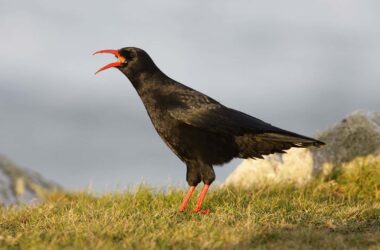A bottlenose dolphin mother and calf in Sarasota Bay, Florida
Sarasota Dolphin Research Program. Photo taken under NMFS MMPA Permit No. 20455
Female bottlenose dolphins mimic human “baby talk” by whistling higher in pitch when speaking to their young. This conduct has the potential to improve socialisation and education in young dolphins.
When interacting with infants, adults tend to use a more melodic, high-pitched tone of voice. Almost all human civilizations and vocal languages use this modified speech pattern.
Evidence suggests that other animals, such as zebra finches, gorillas, and monkeys, may also have developed unique methods of communicating with their offspring.
Each bottlenose dolphin has its own distinguishing whistle that can be recognised from a distance.
According to Laela Sayigh of the Woods Hole Oceanographic Institution in Massachusetts: “For a long time, I’ve been interested in dolphin mother-calf communication, which could help us understand the process by which they develop their signature whistles.”
Over a 34-year period, Sayigh and her colleagues analysed recordings of 19 adult female common bottlenose dolphins (Tursiops truncatus) in the waters near Sarasota Bay, Florida, with and without their calves to determine if the dolphins’ signature whistles change when they communicate with their young.
They discovered that dolphins’ whistles had a higher frequency, or pitch, and a considerably wider frequency range, when they were with their young.
Despite the changes, “the modified whistle still conveys the identity of the animal,” explains study member Frants Jensen from Woods Hole Oceanographic Institution. To paraphrase one researcher, “The subtle shift in the highest frequency that the dolphins use mirrors the pitch shifts we see in humans.”
While Jensen claims that these tweaked vocalisations could aid in dolphins’ vocal learning, there is currently no data to support this claim.
Sayigh argues that understanding the evolutionary context of vocal learning in animals and, by extension, language in humans may be gained by studying how animals communicate with their offspring. Understanding the language and culture of other animals is fundamental.
According to Julie Oswald of the University of St Andrews in the United Kingdom, “I would really be interested to see whether dolphins also change their whistles when interacting with babies of others,” as is the case in humans.
FAQs:
1. How do female bottlenose dolphins communicate with their young? Female bottlenose dolphins communicate with their offspring using high-pitched whistles, similar to human “baby talk.”
2. Why do dolphins use high-pitched whistles with their calves? The modified speech pattern of high-pitched whistles may aid in socialization and education among young dolphins.
3. Do other animals use unique communication methods with their offspring? Yes, evidence suggests that animals like zebra finches, gorillas, and monkeys may have developed unique ways of communicating with their offspring.
4. How do dolphins recognize each other? Each bottlenose dolphin has its own distinctive whistle that can be recognized from a distance, allowing them to identify one another.
5. What does the study of dolphin mother-calf communication aim to understand? Studying dolphin mother-calf communication can provide insights into the process by which dolphins develop their signature whistles and the evolutionary context of vocal learning in animals.
FAQs
1. How do female bottlenose dolphins communicate with their young?
Female bottlenose dolphins communicate with their offspring using high-pitched whistles, similar to human “baby talk.”
2. Why do dolphins use high-pitched whistles with their calves?
The modified speech pattern of high-pitched whistles may aid in socialization and education among young dolphins.
3. Do other animals use unique communication methods with their offspring?
Yes, evidence suggests that animals like zebra finches, gorillas, and monkeys may have developed unique ways of communicating with their offspring.
4. How do dolphins recognize each other?
Each bottlenose dolphin has its own distinctive whistle that can be recognized from a distance, allowing them to identify one another.
5. What does the study of dolphin mother-calf communication aim to understand?
Studying dolphin mother-calf communication can provide insights into the process by which dolphins develop their signature whistles and the evolutionary context of vocal learning in animals.







